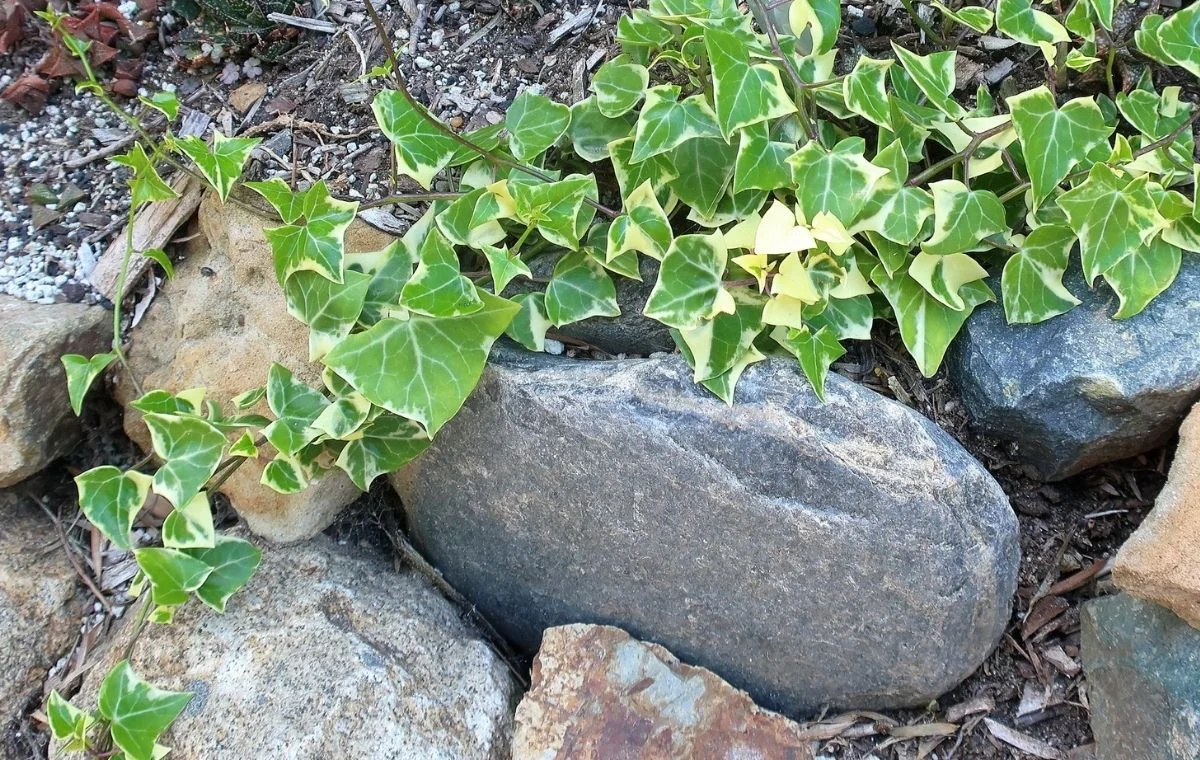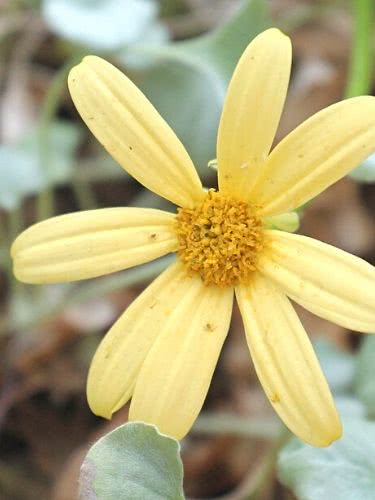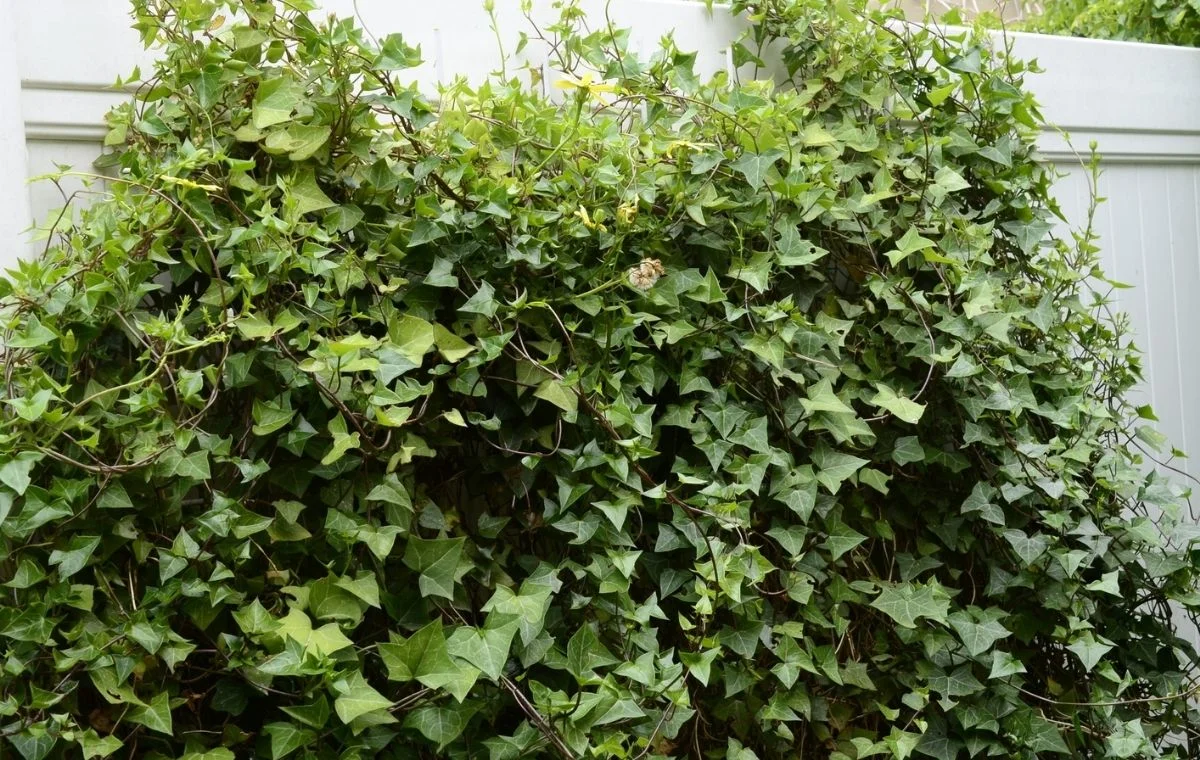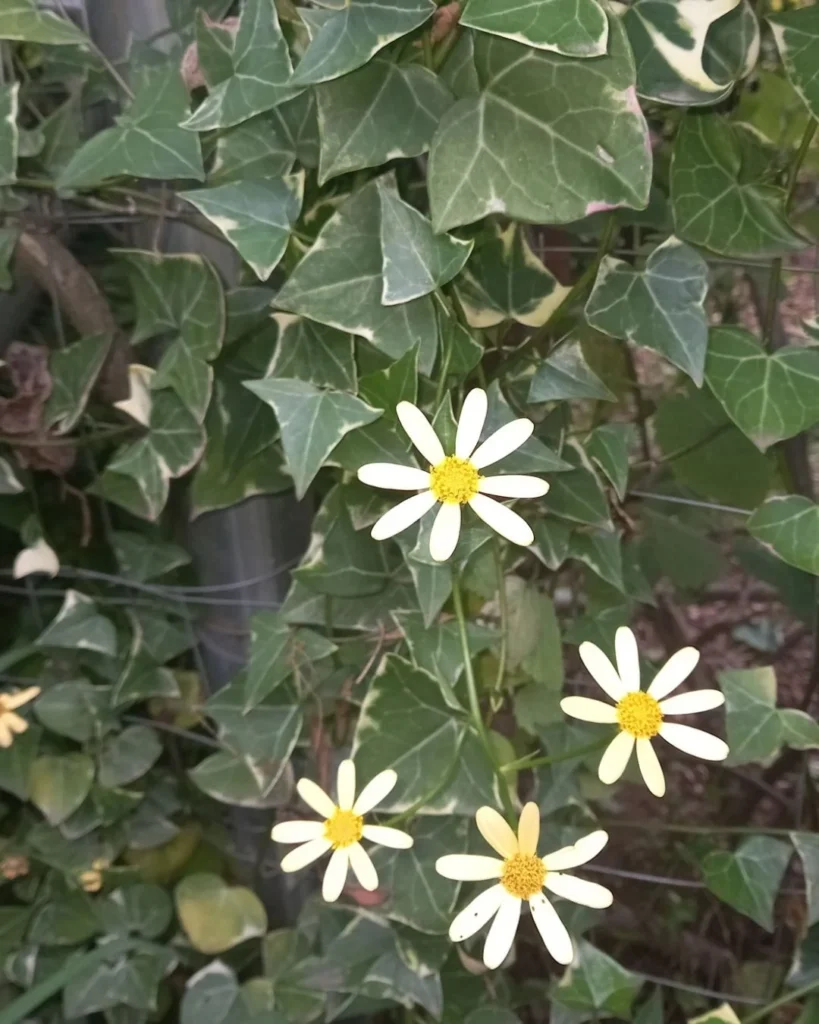The Cape Ivy (Senecio macroglossus) is a perennial, highly branched climber native to the southern part of the African continent, from Zimbabwe to Mozambique and South Africa, specifically from the Cape region. This plant is of great ornamental value, both for its beauty and ease of cultivation. Cape Ivy resembles the English Ivy (Hedera helix), however, they are not related plants, with the Cape Ivy being part of the Asteraceae family, while the English Ivy belongs to the Araliaceae family.

The leaves of the Cape Ivy are distinct, five-pointed, triangular in shape, with a leathery to succulent texture, smooth and waxy surface, and a notable shine. The dark green color of the leaves and the mild lemon scent, which is released when crushed, are characteristics that enrich the sensory experience in gardens. Moreover, the variegated cultivars with leaf margins or centers in shades of white to cream offer a fascinating visual contrast, expanding the possibilities for ornamental use.
The herbaceous and twining stem of the Cape Ivy, with its long, thin branches that can vary from green to purplish, contributes to the plant’s unique aesthetics, making it a popular choice for covering walls, trellises, or as a hanging plant in vertical gardens and pots. This aspect makes the Cape Ivy an excellent option for landscaping projects looking to add texture and visual depth.

During the summer, the Cape Ivy blooms, producing capitulum-type inflorescences, with yellow flowers resembling daisies. Although these flowers are not abundant, they add a subtle touch of color and have their charm. It is important to note that, despite its beauty, the flowering of the Cape Ivy is of secondary ornamental importance, meaning that the main aesthetic value of the plant lies in its lush foliage.
The Cape Ivy is often cultivated in pots or planters. Its growth is contained by pot cultivation, making it ideal for small spaces. Thus, the plant is an excellent decorative choice for terraces, balconies, and balconies, forming natural curtains when planted in lines. These can either hang from above, functioning as pendants, or climb over trellises and other delicate structures, such as screens and steel cables, creating vegetal brisès.
Another interesting application is in vertical gardens, where its variegated leaves bring light and its ability to “snake” offers movement and texture. The plant has a similar effect to the Pothos (Epipremnum pinnatum), another species also used in vertical gardens.
The Cape Ivy is not demanding in terms of maintenance, but requires attention to cleaning pruning and replanting every 1 or 2 years to regain vigor. Cultivation should be done under partial shade, as direct sunlight in the hottest hours can burn the foliage. This slow-growing species prefers a humid and warm climate but can adapt to subtropical and temperate climates if grown in protected and sunny environments, such as greenhouses.

The ideal soil for Cape Ivy should be drainable, fertile, enriched with organic matter, and capable of retaining some moisture. Watering should be moderate, more frequent in summer and reduced in winter, always considering the moisture level of the substrate. It is crucial to avoid both prolonged dryness of the soil, which hampers plant development, and waterlogging, which can lead to rot. Fertilization is recommended every two weeks in spring and summer, using balanced fertilizers (NPK 10.10.10).
For the propagation, the technique of cutting branches is simple and effective. The branches should be put to root in the spring. This technique allows for easy multiplication of the plant, ensuring the preservation of the ornamental characteristics of the mother plant.


